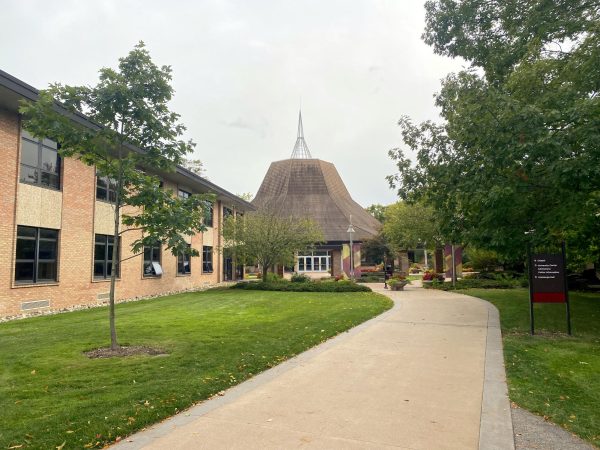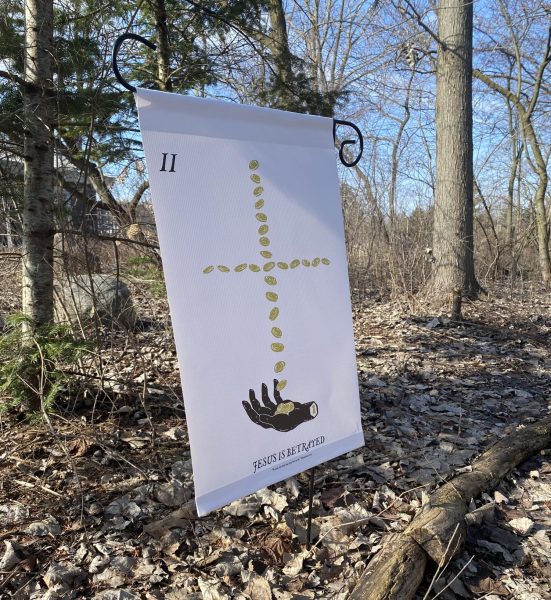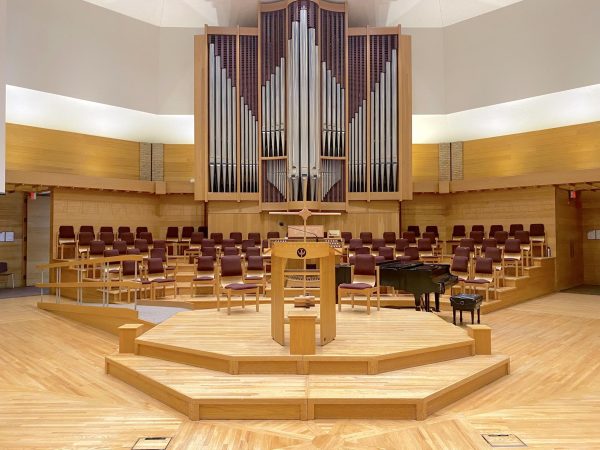Heartside charity org founder weighs in on gentrification
As a part of vibrant downtown Grand Rapids, the Heartside neighborhood has been changing recently as new businesses and restaurants move in, bringing new consumers to the area. Some may call this process gentrification, others may say “it is what it is,” like Jay Schrimpf, Heartside Neighborhood Collaboration Project (HNCP) founder and pastor at Bethlehem Lutheran Church. Loosely defined as the riverbank and Fulton, Wealthy and Jefferson streets, the Heartside neighborhood makes up the southern portion of downtown Grand Rapids.
Although Jennifer McCallister, program coordinator at Heartside Ministries, does not believe that gentrification is a large problem in the Heartside neighborhood, she doesn’t “want our neighbors forgotten about or lost in the shuffle” of further economic development in the area which runs counter to the findings of Chimes’ “Gentrification in the Heartside Community Questioned” on Oct. 6, 2017,
As a program coordinator, McCallister focuses on various aid programs for Heartside community members. This is mainly through bus passes and assistance with medical co-pays and utilities. She emphasized the importance of the vetting process that neighbors need to go through for this aid, including proof of employment, mode of transportation or doctor.
Alongside McCallister and organizations such as Heartside Ministries, Schrimpf addresses the issue of gentrification in the Heartside neighborhood. He founded HNCP because he was concerned that gaps in aid coverage for Heartside residents existed. A May 2010 study by Kuyper College social work students confirmed his suspicion.
Overall, HNCP focuses on ensuring that gaps in aid coverage are filled, and does this through monthly meetings with many organizations such as Dégegé, which provides meal and employment assistance, and aid-providing churches in the area. This aid can take many forms, whether for housing, health or food issues, even insuring that libraries have lists of all services provided in the area for people to easily find.
Concerning gentrification in the Heartside neighborhood, Schrimpf said “not in the classic sense.” He continued to explain that there are laws in place to ensure affordable housing remains available, such as the Dwelling Place properties, which are federal government deed-restricted apartments for low income residents. However, Schrimpf noted that this isn’t the whole picture.
“There is some functional gentrification taking place such as pressure on social service providers to relocate off of Division Avenue.” This pressure is more thoroughly outlined in MLive’s June 26, 2017 piece “Ministry gets pushback from businesses worried about ‘gauntlet of harassment.’”
Schrimpf and McCallister both believe that more needs to be done on this issue and that churches need to continue to be involved. Schrimpf shared that as Christians, we are called to follow the message of Matthew 25, which means being “advocates for those on the fringes.” Schrimpf suggested that college students can help.
“They could be advocates. They could learn about the real issues and political dynamics at play,” he said. “They could volunteer in ways that promote justice rather than only charity.”
If students would like to learn more about the work that Schrimpf, McCallister and others are doing in the Heartside neighborhood, they can check out HNCP (hncp.net) or Heartside Ministries (heartside.org).









